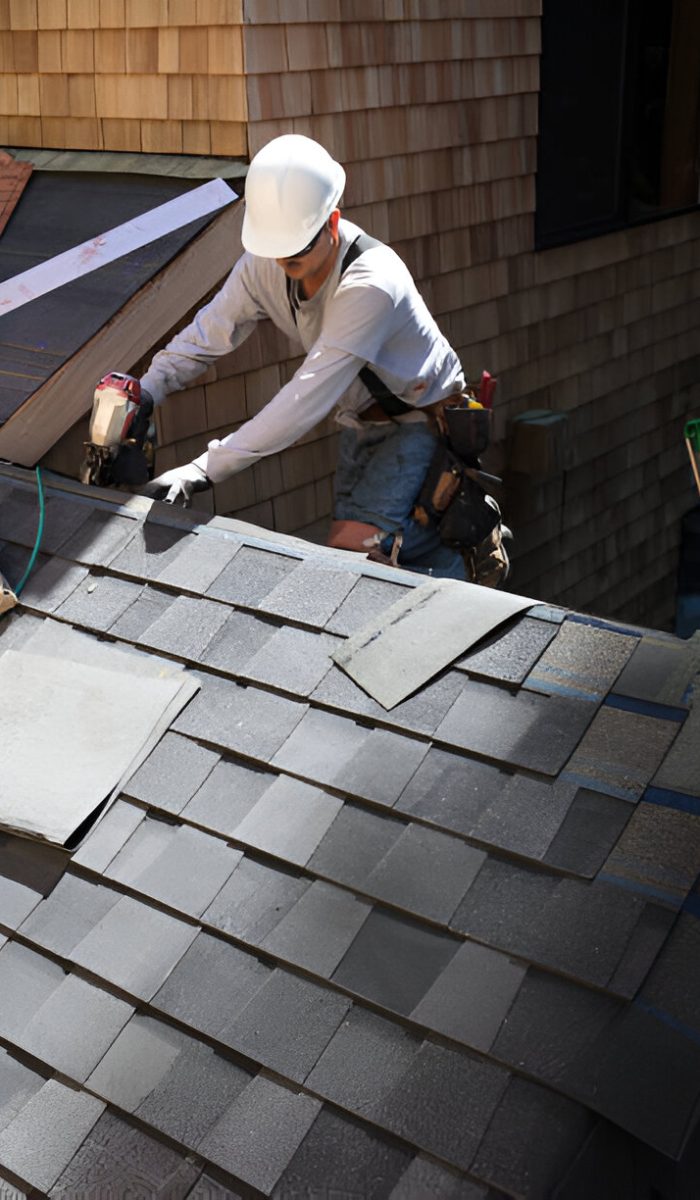How Professionals Prevent Water Seepage During Roof Cleaning
Common Causes of Roof Water Seepage
First we need to understand the common causes of water seepage. The most common causes of water seepage during roof cleaning include:

Improper Cleaning Techniques: Using high-pressure washing can damage roofing materials, leading to cracks or punctures that allow water to penetrate. Professionals often recommend soft washing methods to minimize this risk.
Dislodgement of Protective Granules: During the cleaning process, protective granules on shingles may become dislodged, compromising their ability to repel water and increasing the likelihood of leaks.
Loosening of Shingles: Inexperienced cleaners might inadvertently loosen shingles while cleaning, creating gaps through which water can seep into the roof structure.
Blocked Gutters: Debris dislodged during cleaning can accumulate in gutters and downspouts, causing blockages that impede proper drainage. This can lead to standing water on the roof, increasing the risk of seepage.
Existing Damage: If a roof already has pre-existing issues such as missing or damaged shingles, these vulnerabilities can be exacerbated during cleaning, resulting in water seepage when it rains afterward.
Unsealed Penetrations: Roof penetrations such as vent pipes and chimneys need to be properly sealed. If these seals are compromised during cleaning, water can easily enter the home.
Flashing Issues: Damaged or improperly installed flashing around joints and seams can fail to direct water away from critical areas, leading to leaks during and after cleaning.
Poor Drainage Design: Roofs designed with inadequate drainage systems may not effectively channel water away, especially if they have pooling areas that become problematic during heavy rains following a cleaning.
Steps Taken by Professional Roof Cleaners:
Professional roof cleaners implement several strategies to prevent water seepage during the cleaning process. Here are the key measures they take:

Sealing Vulnerable Areas: Before starting the cleaning, professionals seal any vulnerable areas such as vents, chimneys, and other openings. This prevents water from entering the interior of the roof structure during the cleaning process, minimizing the risk of leaks and water damage .
Thorough Roof Inspection: A comprehensive inspection is performed prior to cleaning to identify any existing damage or potential weaknesses in the roofing material. By addressing these issues beforehand, cleaners can prevent water from seeping through compromised areas.
Maintaining Proper Drainage: Regular roof cleaning ensures that gutters and downspouts are free of debris, allowing water to flow freely off the roof. This reduces the likelihood of water pooling on the roof surface, which can lead to seepage under shingles or tiles.
Using Soft Washing Techniques: Many professionals prefer soft washing over high-pressure washing. Soft washing uses lower pressure combined with specialized cleaning solutions to effectively remove moss and debris without damaging roofing materials, which helps maintain the roof’s integrity and prevents leaks.
Water Management During Cleaning: Professionals are mindful of how water is directed during cleaning. They often use tarps or other barriers to control water runoff and protect sensitive areas of the property from excess moisture.
Identifying and Addressing Growths: By proactively removing moss, algae, and debris that retain moisture, professionals help prevent conditions that could lead to leaks. Regular maintenance reduces the chances of these growths causing damage that allows water to seep through.
Post-Cleaning Inspections: After cleaning, professionals conduct a final inspection to ensure all areas are intact and that no new vulnerabilities have been created during the process. This step is crucial for confirming that the roof is secure against future water ingress.
By following these practices, professional roof cleaners effectively minimize the risk of water seepage during and after the roof cleaning process, ensuring that roofs remain watertight and well-maintained.